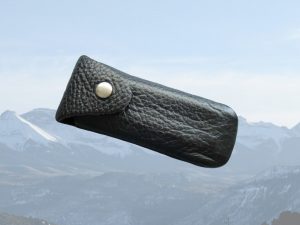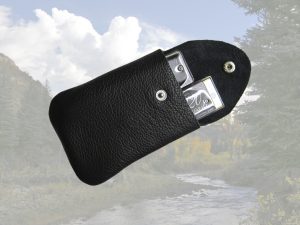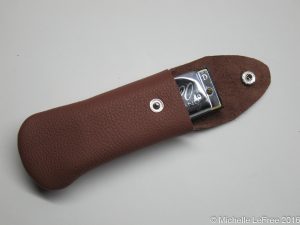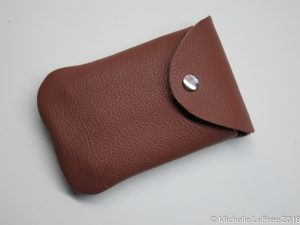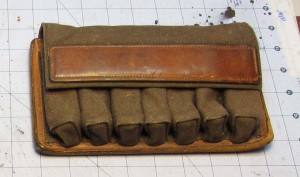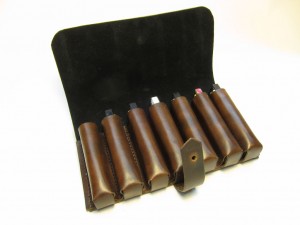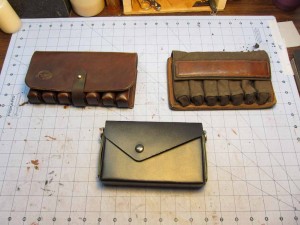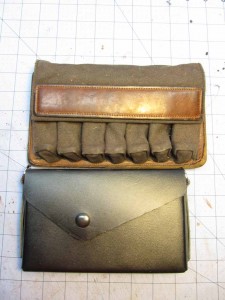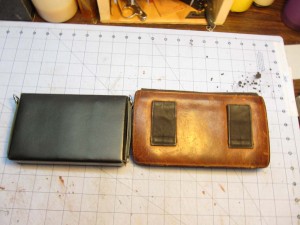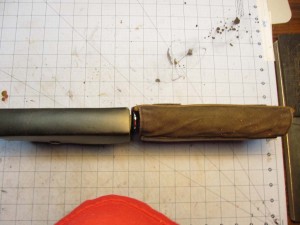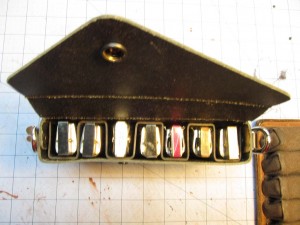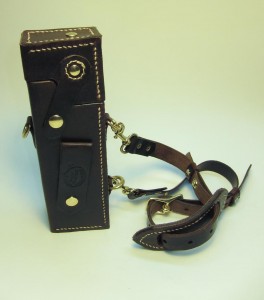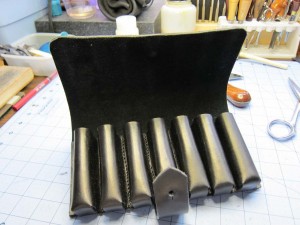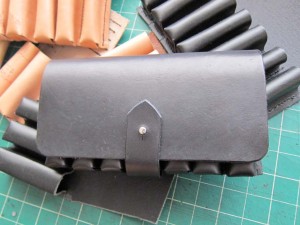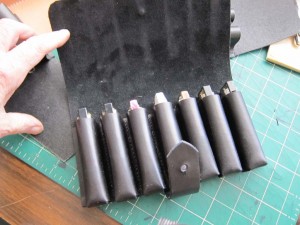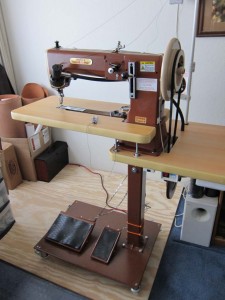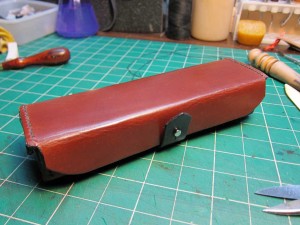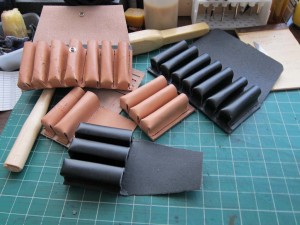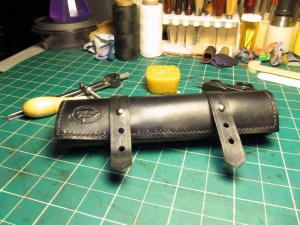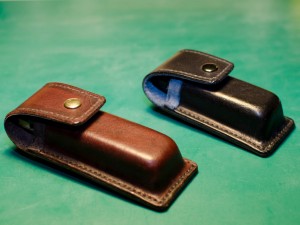Spurred by a customer’s request for a simple case in which he could carry a single diatonic harmonica within his shirt or pant pocket, I recalled a simple stitched leather case with a snap closure that I made for a single diatonic “carry” harp a decade or so ago. I’ve had one in my purse ever since and I don’t know why it took a customer’s suggestion to spur me to include cases like it in my product line. Another customer had suggested a simple case to carry a couple diatonics. Here are some examples of what I came up with.
These pouches don’t offer the crush-proof protection of one of my rigid molded leather cases. They are meant to be carried in pockets or purses where they are protected from direct contact from outside objects. They do afford protection from lint and fuzz as they are deep enough to cover all 10 holes and have full cover flap with a positive snap closure. I now have a supply of this leather in black and tan colors as shown.
You know that you carry at least one harp wherever you go, right? If you don’t you need to start. And here is the ideal way to do that while protecting your favorite axe from foreign material and minor bumps and dings. Yes, you probably have a free case that came with your harmonica. It might even be made of a leather-like material, but is it full-grain genuine leather through and through? Does it have a flap to close it? Is it guaranteed by the maker? Probably not. You paid dearly for your favorite carry diatonic; you might want to think about how you carry it around.
Please see the Contact page for current pricing and ordering information. Try one and it will soon become your constant companion.

